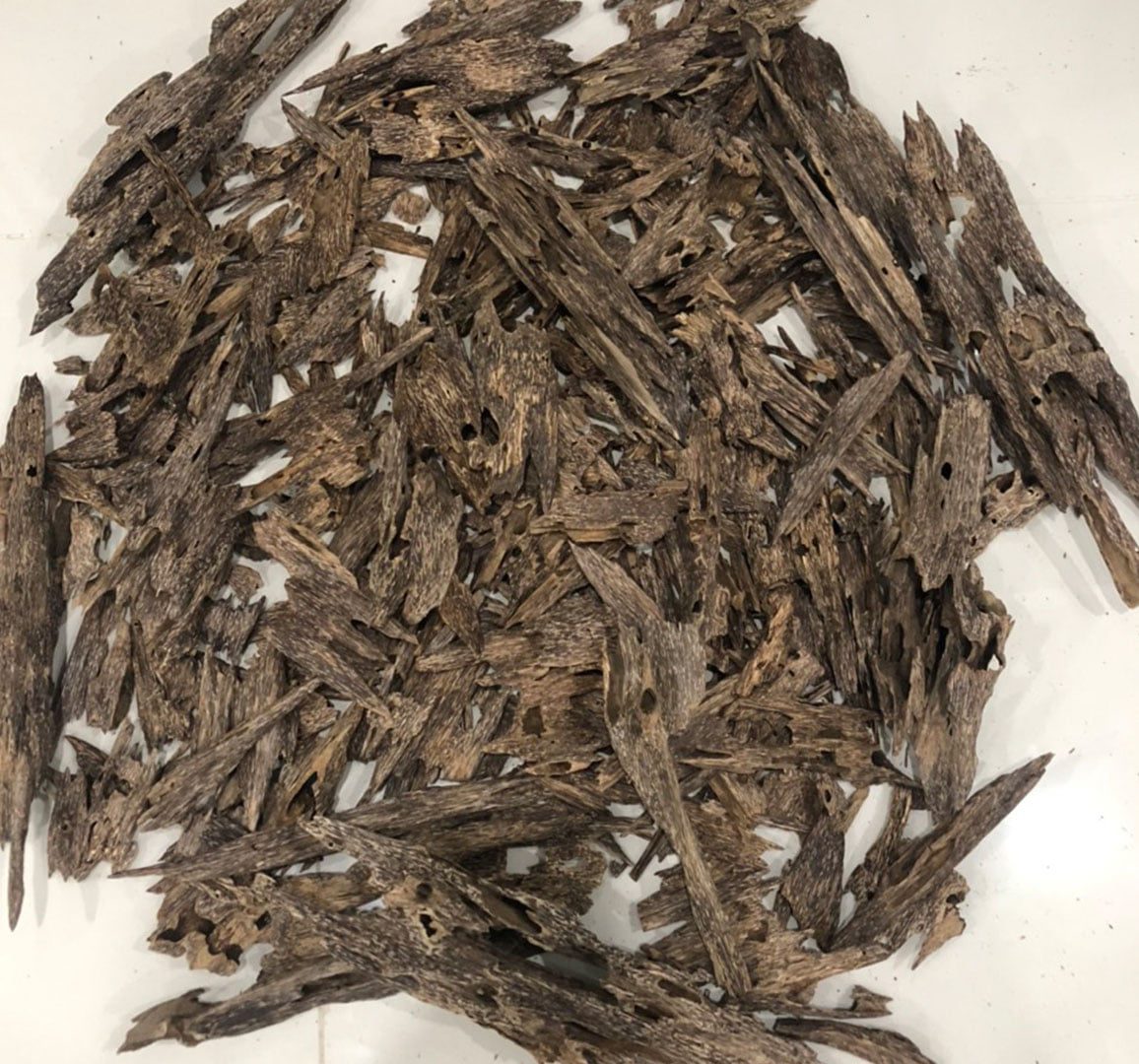
I. Introduction
Table of Contents
ToggleAgarwood, also known as oud or gaharu, is one of the most valuable rare woods in the world. Its rich, complex aroma has made it highly sought after in the fragrance industry, traditional medicine, and cultural rituals. The quality assessment of agarwood is crucial because it directly influences its value and market demand. Understanding the agarwood grades helps consumers and traders identify the best agarwood in the world and make informed decisions regarding purchases and investments.
The purpose of establishing quality standards and grading systems is to ensure the authenticity of agarwood products, protect consumers from fraud, and maintain fair pricing. With the agarwood price per kg reaching exorbitant levels, especially for the most expensive agarwood, proper evaluation methods are essential for sustaining the industry’s integrity.

“For a broader context on agarwood varieties and their identification, visit our Types of Agarwood and Identification Characteristics article.”
II. Understanding Agarwood Grades
Explanation of Grading Systems
The grading of agarwood is a complex process that considers several factors, including resin content, scent profile, color, and density. Traditionally, agarwood has been classified into different agarwood grades based on these characteristics. High-grade agarwood is rich in resin, emits a deep and long-lasting fragrance, and often appears darker in color. Understanding the characteristics of agarwood is essential for evaluating its quality.

Factors Influencing Agarwood Quality
Environmental conditions play a significant role in the formation of agarwood. Factors such as the age of the tree, the presence of mold, and external injuries can affect resin production. Additionally, there is a distinction between wild-harvested and cultivated agarwood. Wild agarwood is generally considered superior due to its natural growth conditions, contributing to higher resin content and, consequently, higher agarwood value.

“The grading of agarwood is a complex process that considers several factors. For an overarching view of agarwood’s importance and characteristics, refer to our Comprehensive Overview of Agarwood.”
III. Sinking Agarwood: The Gold Standard
Definition and Characteristics
Sinking agarwood, also known as “sinkers,” refers to agarwood pieces so dense with resin that they sink in water. This high density is a direct result of extensive resin saturation, which makes the wood heavier than water. Sinking agarwood is considered the pinnacle of quality and is often reserved for the most exclusive uses, such as high-end perfumery and ceremonial incense.

Why Sinking Agarwood is Highly Valued
The rarity and superior qualities of sinking agarwood make it one of the most expensive agarwood types on the market. Its rich and complex aroma, longevity when burned, and deep cultural significance contribute to its high agarwood price per kg. Collectors and connoisseurs regard it as the best agarwood in the world, and its scarcity further drives up its value.

“Understanding how agarwood compares to other fragrant woods can provide additional insights into its grading and valuation. See our comparison in Comparing Agarwood with Other Fragrant Woods.”
IV. The Best and Most Expensive Agarwood in the World
Top Quality Agarwood Varieties
The best agarwood in the world typically comes from regions like Vietnam, Laos, Cambodia, and certain parts of the Middle East. Varieties such as Kyara and Kynam are among the most coveted, known for their unparalleled fragrance profiles and rarity. These high-grade agarwoods are often associated with sinking agarwood due to their high resin content.

Factors Contributing to High Prices
Several factors contribute to the high agarwood price per kg for these premium varieties. The time it takes for a tree to naturally produce such high-quality resin can span decades. Coupled with over-harvesting and the endangered status of certain Aquilaria species, supply is extremely limited. The cultural and religious importance of agarwood in regions like the Middle East and Asia also elevates its market demand, further increasing its value. The standards for grading agarwood can guide consumers in buying quality agarwood.
V. Quality Assessment Methods
Traditional Evaluation Techniques
Traditional methods of quality assessment of agarwood rely heavily on sensory evaluations. Experts assess the olfactory properties by heating a small piece of the wood and inhaling its aroma. The depth, complexity, and longevity of the scent are key indicators of quality. The sink-float method is another traditional test, where pieces of agarwood are placed in water to determine if they are sinking agarwood, indicating a higher grade.
Modern Scientific Approaches
Advancements in technology have introduced more precise methods for assessing agarwood quality. Chemical analysis using techniques like Gas Chromatography-Mass Spectrometry (GC-MS) allows for the identification of specific compounds responsible for the fragrance. These modern methods provide a more standardized approach to grading, reducing subjectivity and increasing consistency in agarwood grades.

VI. Agarwood Value and Pricing
Understanding Agarwood Market Prices
The agarwood price per kg varies widely depending on the grade. High-grade agarwood, especially sinking agarwood, can fetch prices upwards of tens of thousands of dollars per kilogram. Factors influencing price include resin content, scent quality, origin, and rarity. Lower-grade agarwood is more affordable but lacks the intense aroma and longevity of higher grades. High-quality agarwood is known for its benefits of agarwood in various applications.

Investment and Trade Considerations
For investors and traders, understanding the nuances of agarwood grades is essential. High-grade agarwood is not only a luxury commodity but also a form of investment due to its appreciating value over time. However, the market is fraught with counterfeit products and misrepresented grades, making accurate quality assessment of agarwood crucial to avoid financial losses. The spiritual significance of agarwood often correlates with its quality and rarity.
VII. Importance of Standardization in Grading
Benefits of Standard Grading Systems
Implementing standardized grading systems brings several benefits to the agarwood industry. It ensures consistency in evaluating quality across different regions and markets, facilitating fair trade. Standardization enhances consumer trust by providing transparency and reducing the risk of fraud. It also aids in the protection of endangered species by discouraging illegal harvesting practices.
Challenges in Standardization
Despite the benefits, achieving standardization poses challenges. Traditional grading practices are deeply rooted in cultural contexts and may vary significantly between regions. Balancing these traditional methods with modern, standardized approaches requires collaboration and agreement among international stakeholders. Additionally, the clandestine nature of the agarwood trade and lack of regulation in some areas complicate efforts toward standardization.

VIII. Conclusion
Recap of Agarwood Quality Evaluation
In summary, the quality assessment of agarwood is a multifaceted process that significantly impacts its value and the overall dynamics of the market. Understanding the different agarwood grades, from standard grades to the coveted sinking agarwood, is essential for anyone involved in the agarwood industry. Accurate evaluation methods protect consumers, support fair pricing, and help maintain the integrity of this precious commodity.
Future Perspectives
Looking ahead, there is a growing need for developing global grading standards that incorporate both traditional knowledge and modern scientific techniques. Emphasizing sustainable harvesting practices and ethical sourcing is crucial to protect endangered species and ensure the long-term availability of high-quality agarwood. Stakeholders must work together to promote transparency, standardization, and conservation efforts within the industry.
FAQs
- What criteria are used in the agarwood grading system? Agarwood grades are determined based on resin content, scent quality, color, density, and overall appearance. Higher grades have more resin, a richer aroma, and are often darker and denser.
- Why is sinking agarwood considered the gold standard? Sinking agarwood is so dense with resin that it sinks in water. This high resin saturation indicates superior quality, making it one of the most expensive agarwood types and highly sought after in the market.
- How does the quality of agarwood affect its price per kilogram? The agarwood price per kg varies significantly with quality. Higher-grade agarwood commands higher prices due to its rarity, superior fragrance, and high demand, affecting its overall value.
- What challenges exist in standardizing agarwood grading? Challenges include variations in traditional grading practices across cultures, subjectivity in sensory evaluations, and the need to balance these with modern, standardized approaches for consistency in the global market.
- How can consumers ensure they are purchasing high-quality agarwood? Consumers should seek products that have been evaluated using recognized quality assessment methods, purchase from reputable sources, and may consider certifications or laboratory analyses that confirm the agarwood grades.
Author
Tran Thi Bich Ngoc is the Head of Production at Oudgo, overseeing the entire production process from agarwood harvesting to processing and packaging the final products. She holds a Bachelor’s degree in Biotechnology from Hanoi University of Science and Technology and brings over fifteen years of experience in the agarwood production industry. Prior to joining Oudgo.Ms. Ngoc worked with companies specializing in the production of natural cosmetics and health care products. Her extensive expertise ensures the highest quality and efficiency in Oudgo’s production operations, contributing significantly to the company’s reputation for excellence see more
